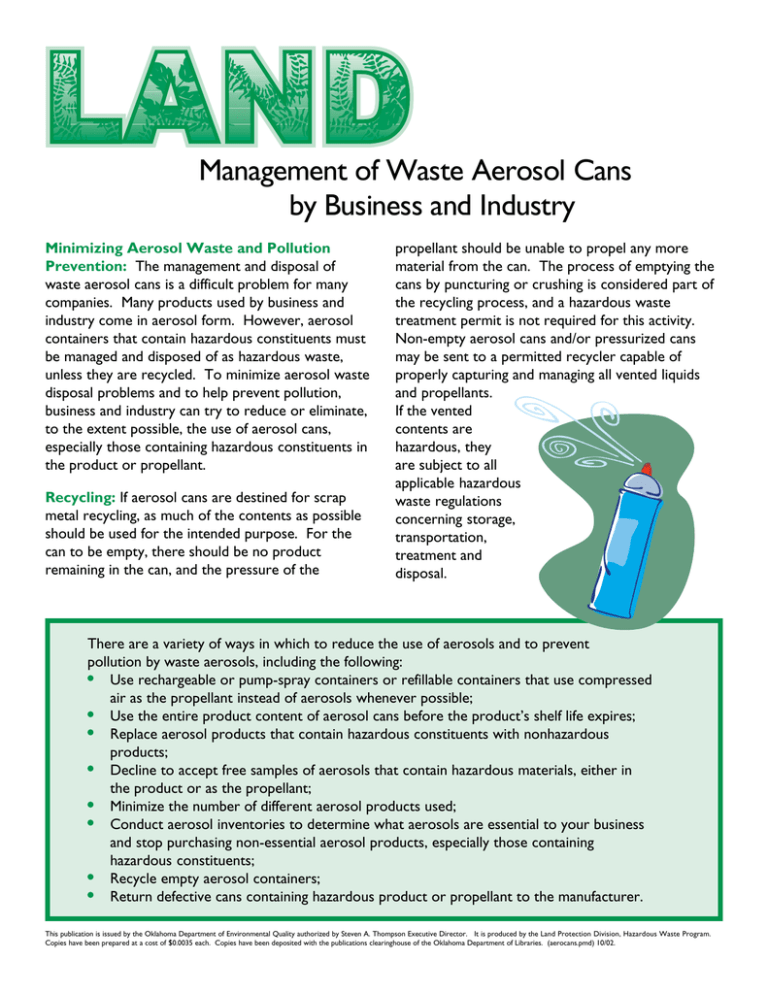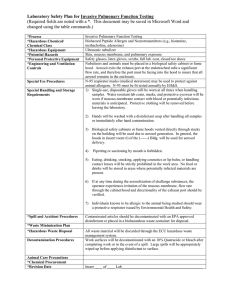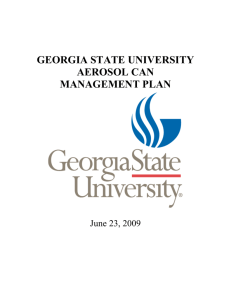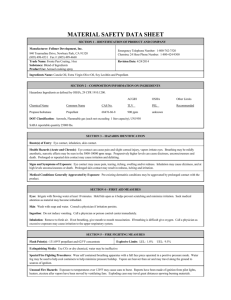Aerosol Cans - the Oklahoma Department of Environmental Quality
advertisement

Management of Waste Aerosol Cans by Business and Industry Minimizing Aerosol Waste and Pollution Prevention: The management and disposal of waste aerosol cans is a difficult problem for many companies. Many products used by business and industry come in aerosol form. However, aerosol containers that contain hazardous constituents must be managed and disposed of as hazardous waste, unless they are recycled. To minimize aerosol waste disposal problems and to help prevent pollution, business and industry can try to reduce or eliminate, to the extent possible, the use of aerosol cans, especially those containing hazardous constituents in the product or propellant. Recycling: If aerosol cans are destined for scrap metal recycling, as much of the contents as possible should be used for the intended purpose. For the can to be empty, there should be no product remaining in the can, and the pressure of the propellant should be unable to propel any more material from the can. The process of emptying the cans by puncturing or crushing is considered part of the recycling process, and a hazardous waste treatment permit is not required for this activity. Non-empty aerosol cans and/or pressurized cans may be sent to a permitted recycler capable of properly capturing and managing all vented liquids and propellants. If the vented contents are hazardous, they are subject to all applicable hazardous waste regulations concerning storage, transportation, treatment and disposal. There are a variety of ways in which to reduce the use of aerosols and to prevent pollution by waste aerosols, including the following: Use rechargeable or pump-spray containers or refillable containers that use compressed air as the propellant instead of aerosols whenever possible; Use the entire product content of aerosol cans before the product’s shelf life expires; Replace aerosol products that contain hazardous constituents with nonhazardous products; Decline to accept free samples of aerosols that contain hazardous materials, either in the product or as the propellant; Minimize the number of different aerosol products used; Conduct aerosol inventories to determine what aerosols are essential to your business and stop purchasing non-essential aerosol products, especially those containing hazardous constituents; Recycle empty aerosol containers; Return defective cans containing hazardous product or propellant to the manufacturer. This publication is issued by the Oklahoma Department of Environmental Quality authorized by Steven A. Thompson Executive Director. It is produced by the Land Protection Division, Hazardous Waste Program. Copies have been prepared at a cost of $0.0035 each. Copies have been deposited with the publications clearinghouse of the Oklahoma Department of Libraries. (aerocans.pmd) 10/02.





